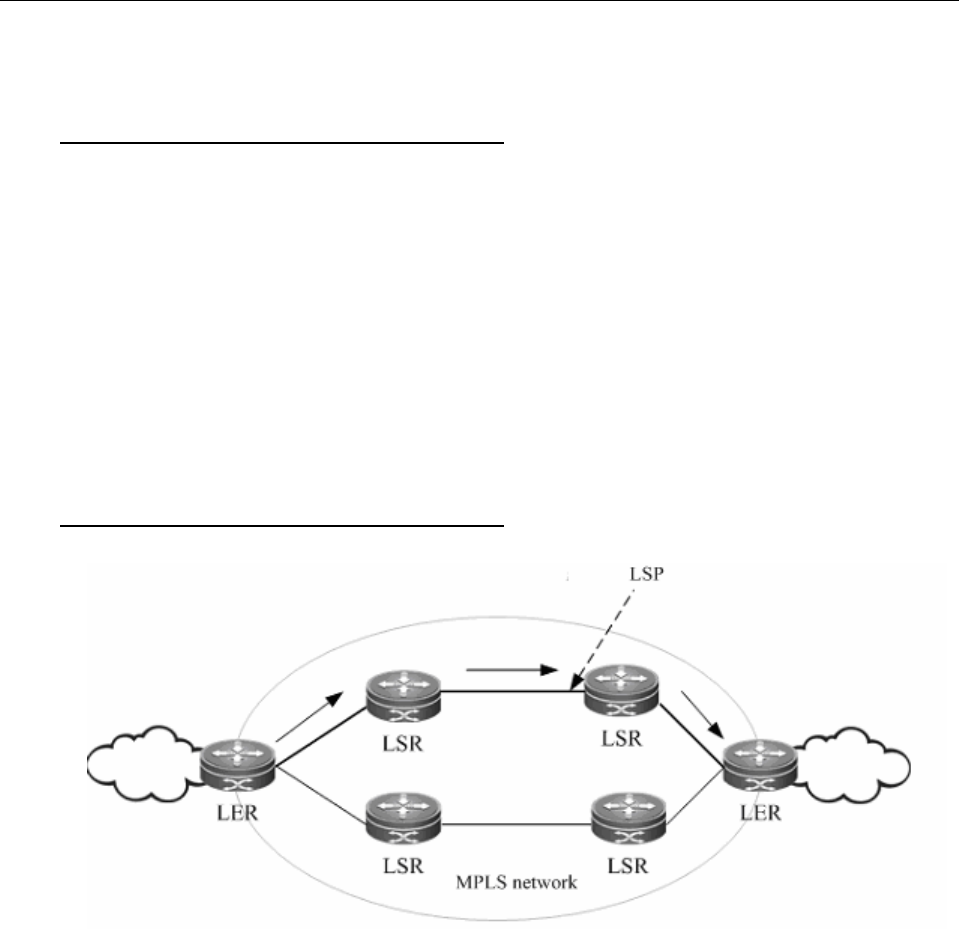
DES-7200 Configuration Guide Chapter 1 MPLS Configuration
1-6
Replace the top label in the label stack of packets based on the ILM during forwarding.
1.1.3 LDP
As a new network system, MPLS also has its own signaling protocols or "routing protocols". One
of the basic concepts in the MPLS system is that two LSRs must reach consensus on the
meaning of labels used for traffic transmission. This consensus is realized through a series of
processes, that is, the LDP. Through the LDP, one LSR can notify the other LSR of the label
binding. The MPLS system architecture does not assume the existence of a single LDP. Some
MPLS systems use independent distribution protocols, such as the LDP defined in RFC 3036 by
the IETF; other MPLS systems support the distribution of labels by extending existing protocols
in piggybacking mode, such as MP-BGP and RSVP. You can choose different LDPs for MPLS
networks based on the different application scenarios.
1.1.4 MPLS Network
Figure 2
An MPLS network has two basic components: LSR and LER. The LSR, which is located at the
core MPLS network, runs the LDP and forwards packets based on labels. The LER classifies
incoming packets into FECs, adds labels, and encapsulates the labels as MPLS packets for
forwarding. The LER also removes the labels from outgoing MPLS packets and restores the
original packets. On the MPLS network, packets with labels are forwarded along the LSP set up
through the LDP.
The MPLS system architecture can be divided into the forwarding unit (data plane) and control
unit (control plane). The former forwards packets by searching the label forwarding database
based on the labels carried in packets whereas the latter is responsible for creating and
maintaining label forwarding information database between the connected MPLS nodes. Each


















